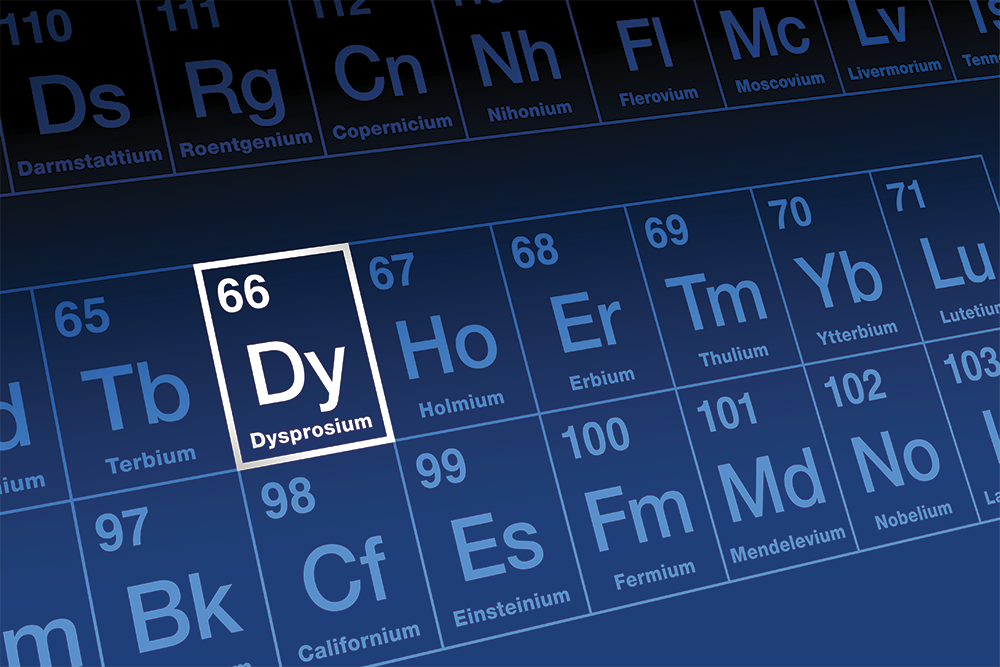
Dysprosium (Dy)
Dysprosium is a rare-earth element belonging to the lanthanide group, with the atomic number 66. It is known for its distinctive magnetic properties.
Properties
Rare earths are the unseen workhorses of our digital age and the burgeoning green economy. They are essential components in a vast array of high-tech applications, from the devices in our pockets to the advanced military hardware that secures nations.
- Physical Characteristics:
It is a silvery-white, soft metal that is relatively resistant to oxidation in dry air. - Magnetic Properties:
Dysprosium exhibits exceptionally strong magnetism, particularly at low temperatures. It is ferromagnetic below -183°C and transitions to a paramagnetic state above this temperature. - Chemical Properties:
Its most stable oxidation state is +3, and it reacts with water and acids.

Applications
Dysprosium is a crucial component in several industries, particularly in high-tech and clean energy sectors.
- High-Performance Permanent Magnets:
It is a key ingredient in neodymium (NdFeB) magnets used in electric vehicle motors and wind turbine generators. Dysprosium enhances the magnet’s resistance to demagnetization at high temperatures (magnetic coercivity), ensuring they remain strong in hot environments. - Alloys:
It is a component of the Terfenol-D alloy, along with iron and terbium. This is a magnetostrictive material that changes shape when exposed to a magnetic field, and it is used in sensors and sonar systems. - Nuclear Reactors:
Due to its high neutron-absorption cross-section, dysprosium is used in control rods within nuclear reactors to regulate the fission process. - Lighting Technology:
Dysprosium compounds, such as dysprosium iodide, are used in high-intensity metal halide lamps that produce bright white light. - Data Storage:
The magnetic properties of dysprosium are also utilized in data storage devices like hard disk drives to improve data stability and reliability.

